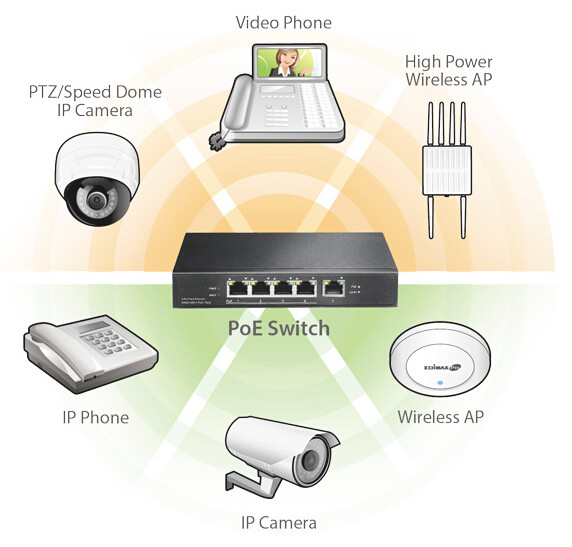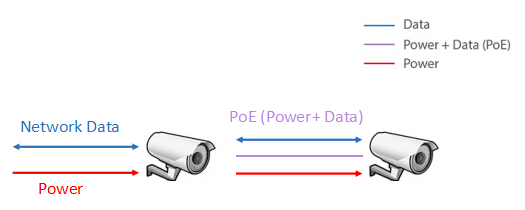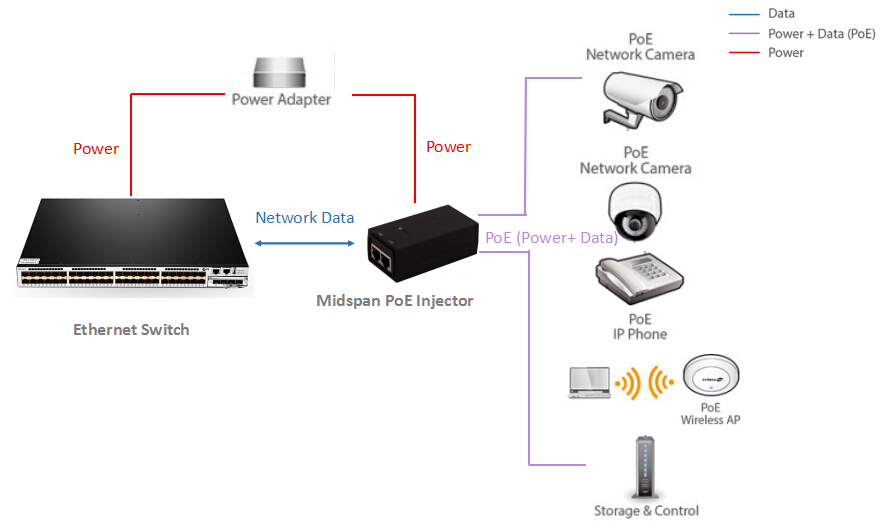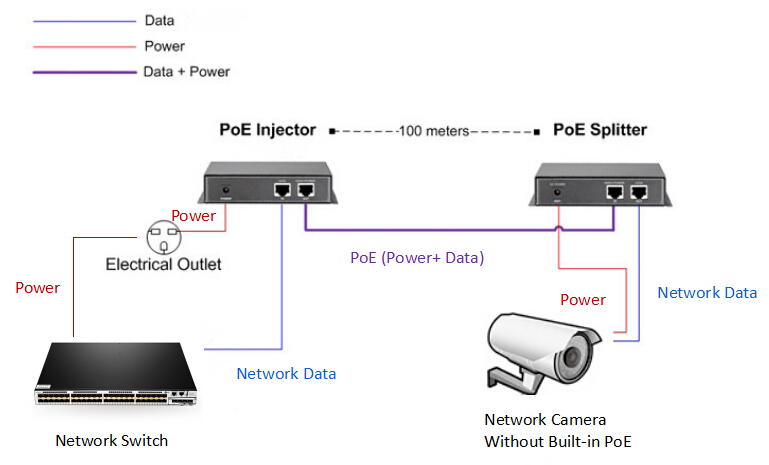You may come across the situation when it is needed to install IP telephones, wireless access points or IP cameras to somewhere AC power outlets are not available. What would you do then? As extra power supply and wiring installation can be labor-intensified and time-consuming. The most feasible solution is to deploy PoE (Power over Ethernet)—a system standardized by IEEE802.3 that supplies low voltage power to Ethernet-enabled devices via the communication line. Here we illustrate how to upgrade your existing network to PoE.
PoE Network Explained
As its name suggests, PoE (power over Ethernet) is the technology to supply power directly via data cable, eliminating the need for additional electrical wiring. It makes network planning flexible and independent of switch sockets and cabinets, requiring no extra costs for excess wiring. Thus devices can be installed wherever structured Ethernet wiring is located, without the need for AC power outlets nearby.

Generally speaking, this technology enables network cables carry electrical power. Let’s take surveillance camera for example: it typically requires two connections when it is installed: a network connection to communicate with video recording and display equipment, and a power connection to deliver the electrical power to operate the camera. However, if this surveillance camera is PoE compatible, all we need is the network connection, as it can receive the needed electrical power from the cable as well.

Advantages of PoE Network
We know that powered devices such as surveillance cameras and wireless access points are often located in places where traditional power outlets are difficult to install or even not available. Under such circumstances, PoE functions to facilitate the use of wireless access devices, IP phones, surveillance cameras, the benefits of which is thus obvious.
The advantages of power of Ethernet features that Ethernet is always ubiquitous, hence it greatly increases mobility for end devices. And as no AC power involved, PoE is safer to use. Moreover, it simplifies installation and operation without the need for extra AC power wiring, keeping the cabling secure while not interfering with the network operation. This makes power over Ethernet a much securer, more reliable and cost-saving solution.
How to Integrate PoE to Your Network?
Before upgrading your existing network to PoE-enabled one. You’d better firstly make clear that there are two types of devices involved in this system: power sourcing equipment (PSE) and powered devices (PD). PD refers to a power over Ethernet compatible network end device equipped to accept power transmitted over structured Ethernet cabling. PSE provides DC power to PD. A PSE may be an endspan device or a midspan device. An endspan device typically is a network switch enabled to provide PoE power on each port. A midspan device is connected in-line to each end device and adds power to the line.
There generally exist three routes to achieve power over Ethernet to your network.
1. By PoE switch: a PoE switch is a network switch that with built-in power over Ethernet injection. Simply by connecting other network devices to the switch as normal, the switch will detect whether they are compatible to power over Ethernet and then enable power automatically. This kind of switches are available to suit all applications, from low-cost unmanaged edge switches with a few ports, up to complex multi-port rack-mounted units with sophisticated management.

2. Using midspan: a midspan enables PoE capability to regular network switches. With midspan, one can upgrade existing LAN installations to PoE. Midspan also provides a versatile solution where fewer ports are required. Upgrading each network connection to power over Ethernet is as simple as patching it through the midspan.

3. Via a PoE splitter: it is also feasible to upgrade powered devices (PDs) to power over Ethernet enabled ones by splitter. This splitter is patched into the camera’s network connection, and taps off the PoE power, which it converts into a lower voltage suitable for the camera.

Conclusion
The simplicity of combining signal and power in one Ethernet cable connection makes PoE technology an ideal solution for enterprise network. In this case, PSE can provide power to a wide variety of PD in areas with no access to AC power. Deploying this technology in your network will lead to a safe, reliable, and economical way to deliver consistent and dependable power to common networking devices.

No comments:
Post a Comment